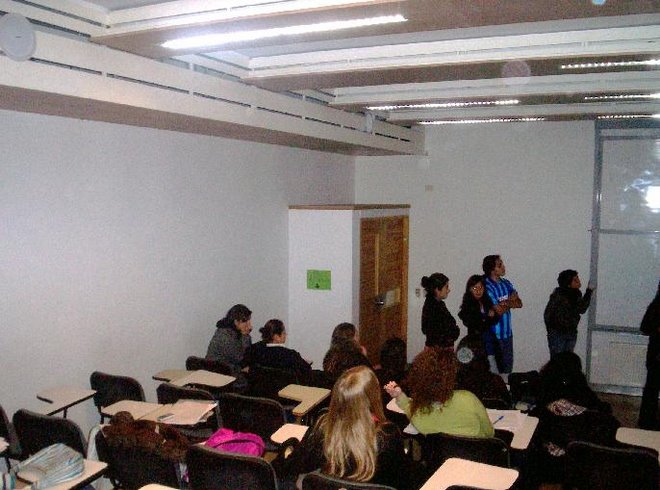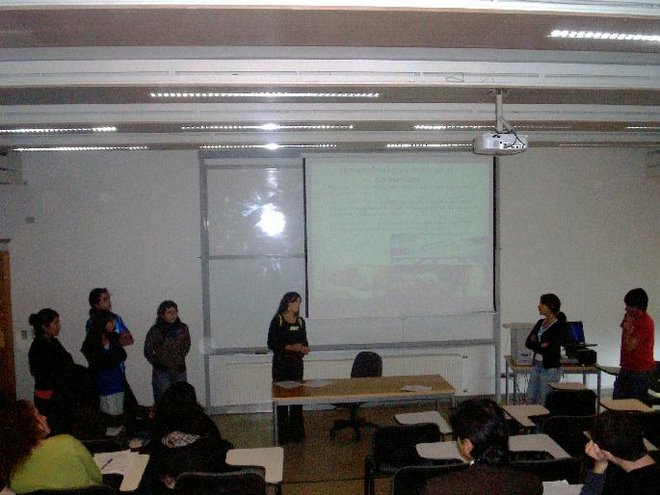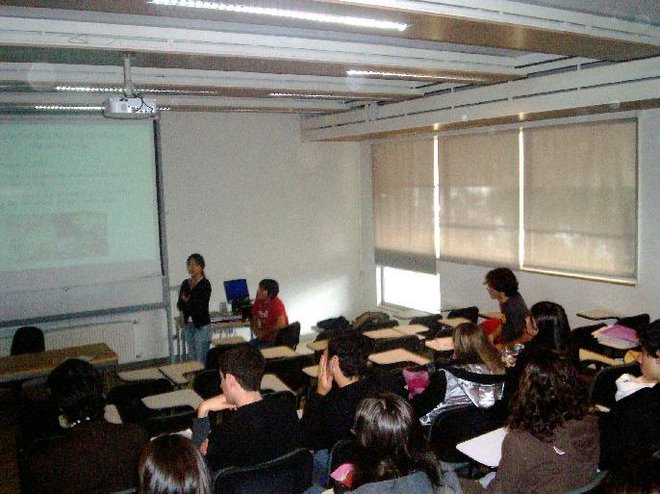




Existen diferentes maneras de definir la cultura, es por eso que en el siguiente trabajo se expondrán algunas de estás y demostraremos cómo la cultura influye en las personas. La cultura tiene dos explicaciones, de las cuales nosotros nos basaremos en la perspectiva evolucionista, la cual plantea que la cultura surgiría como la respuesta a una necesidad de mayor eficiencia por parte de la humanidad. Como sabemos la cultura muchas veces determina los patrones de conducta de las personas. Esto hace hincapié en una característica de la cultura, la cual al no ser única, hace que se establezcan diferencias en las personas de una cultura con personas de otra. Para esto nos basaremos en las características de la cultura individualista, que corresponde a la occidental (norteamericanos y europeos principalmente) y la cultura colectivista correspondiente a la cultura oriental (asiáticos). Uno de los aspectos en el que nos centramos es en las diferencias que se presentan a la hora de crear un autoconcepto, el cual es entendido como la visión de lo que uno mismo es. Este autoconcepto va a presentar semejanzas dentro de las personas de una misma cultura, ya que las personas toman a esta como un modelo a seguir. Otro aspecto en el cual nos centramos en este trabajo es en cómo la cultura afecta la educación de las personas. En las diferentes culturas se pueden ver diferencias notables frente a este tema, específicamente en lo que respecta a ser buen alumno y buen profesor en estas dos culturas. Como vemos la cultura va a influenciar muchos aspectos de nuestras vidas sin darnos cuenta, y es lo que podemos apreciar en lo que respecta a la forma en que las personas van a expresar sus sentimientos y emociones. Para esto veremos que al momento de considerar la cultura las emociones dejan de ser un fenómeno interno y privado y pasan a ser un producto social. Además de las emociones la cultura también influye en nuestra salud, ya que nos hace percibir las patologías de forma diferente. Como vemos la cultura afecta en casi todos los ámbitos de nuestra vida, pero nosotros vamos a tocar solo algunos de ellos, para tener una idea de cómo la cultura puede influir en las personas. Especialmente en el mundo globalizado, es importante tenerlo en cuenta para alcanzar una mejor socialización.
Palabras claves: cultura, diferencias culturales, teoría evolucionista, cultura colectivista, cultura individualista.
inglés
There are different ways to define the culture, and it’s because of it that in the next work there will be exposed some of these and we’ll show how the culture influences in people. The culture has two explications, in which we will bass our evolutionist perspective, that raises that the culture will be born as an answer to a necessity of a higher efficiency by the part of the humanity. As we know the culture a lot of times determines the patterns of the people way of being. This made emphasis in a characteristics of the culture, the one that for not being unique, it establishes differences in the people of one culture with the ones from another. For this we rely in the characteristics of the individualist culture, who’s the occidental one (principally North Americans and Europeans) and the collectivist culture that corresponds to the eastern culture (Asians). One of the aspects in which we centered it’s the differences that presents at the hour of creating an auto concept, the one that’s understood as the vision of what you really are. This auto concept will present similitude between the people of the same culture, because they take this one as a model to follow. Another aspect in which we centered in this work is in how the culture affects the education of the people. In the different cultures you can see notable differences in front of this topic, specifically in what respects of being a good student and a good teacher in this two cultures. As we see the culture will influence many aspects of our lives and we will not note it, and that is what we can appreciate in what respects to the way that people express their feelings and emotions. For this we’ll see that at the moment of considering the culture, the emotions stop being an internal and private phenomenon and they start being a social product. Beside of the emotions, the, because it makes us perceive pathologies different. As we can see, culture can affect almost every aspects of our life, but we are going to see only a few of them, to have an idea of the way in which culture can influence people. Especially in the World of globalization it is important to have it mind, in order to reach a better socialization.
Key Words: culture, cultural differences, evolutionist theory, sociocentric culture, individualistic culture.
alemán
Es existieren different Wege von Definieren der Kultur, es ist aus jenem Grund, der im Folgenden einige von diesen arbeitet, wird entblößt werden und wir werden vorführen, wie die Kultur in Leuten beeinflusst. Die Kultur hat zwei Erklärungen, von den wir werden uns basieren auf der evolutionären Perspektive, die skizziert, dass die Kultur vielmals es die Muster der Leute das Verhalten bestimmt. Dies macht Nachdruck in einem Kennzeichen von der Kultur, das ein, das wenn nur nicht ist, macht er, dass Unterschiede sich in Leuten von einer Kultur mit Leuten von einem anderem beruhigen. Für dieses werden wir uns auf den Kennzeichen von der individualistischen Kultur, der es dem Westlicheren (nordamerikanisch und Europäer hauptsächlich) und der Kulturkollektivist entspricht, entsprechend der orientalischen Kultur (Asiaten) basieren. Einer der Aspekte, in den wir uns zentrieren, ist die die Unterschiede, die überreicht werden, wenn Schaffen eines Autosbegriffs, das verstanden ist, als die Sicht, wovon sich ist. Dieser Autobegriff wird Gestalt innere Leute die Kultur von von sich überreichen, da Leute zu diesem nehmen, als ein Modell, zu sein. Ein anderer Aspekt, in den wir uns in dieser Arbeit zentrieren werden, ist darin, wie die Kultur die Erziehung der Leute beeinflusst. In den verschiedenen Kulturen können bemerkenswerte Unterschiede vor diesem Thema, ausdrücklich gesehen werden, in was angeht, guter Student zu sein, und guter Lehrer in diesen zwei Kulturen. Während wir die Kultur sehen, dass es viele Aspekte von unseren Leben beeinflussen wird ohne zu erkennen, und es ist was wir können schätzen, in was zur Form in jenen Leuten angeht, wird ausdrücken ihre Gefühlen. Für dieses werden wir sehen dass zum Moment, die Kultur zu bedenken, die Gefühle hören auf, ein inneres und privates Phänomen zu sein, und sie werden ein soziales Produkt. Außer den Gefühlen beeinflusst die Kultur auch in unserer Gesundheit, da es uns macht, nehmen die Pathologien in einer anderen Art wahr. Während wir die Kultur sehen, dass es in fast den ganzen Umwelten von unserem Leben beeinflusst, aber wir werden allein einige von ihnen spielen, eine Idee zu haben, von wie die Kultur in Leuten beeinflussen kann.
Besonders in der globalisierten Welt, ist es wichtig, es in Gemüt zu behalten, eine bessere Sanierung zu erreichen.
Wichtige Wörter: Kultur, Kulturelle Unterschiede, Evolutionistkultur, Kulturkollektivist, Individualistische Kultur.





























